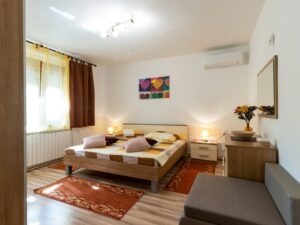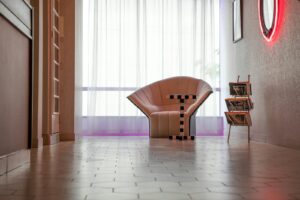When it comes to choosing carpet, I’ve learned that it’s not a one-size-fits-all game. Picking between commercial and residential carpet is like comparing apples and oranges — they may look similar at first glance, but the purpose behind each one couldn’t be more different. I’ve seen homeowners scratch their heads wondering why their plush living room carpet wears out in a busy office, and business owners regret installing industrial-grade carpet that feels as soft as sandpaper underfoot.
You see, commercial and residential carpets are designed with completely different worlds in mind. One’s built to withstand the hustle and bustle of constant foot traffic, coffee spills, and rolling chairs; the other’s made to bring warmth, comfort, and style into our homes. Choosing the wrong type can be like putting a square peg in a round hole — it just doesn’t fit.
In this post, I’ll walk you through the nuts and bolts of both carpet types, sharing my two cents on what sets them apart and when to use each one. By the end, you’ll be able to pick the right carpet with your eyes closed — no more walking on thin ice when it comes to flooring decisions!
What Is Commercial Carpet?
When I think of commercial carpet, the first thing that comes to mind is toughness — the kind of flooring that can take a beating and still look sharp. Commercial carpets are designed for spaces where foot traffic is heavy and constant: offices, hotels, retail stores, airports, you name it. These carpets are the unsung heroes of high-traffic environments, built to endure everything from coffee spills to the endless shuffle of shoes and rolling office chairs.
Unlike the soft, cozy feel of home carpeting, commercial carpet is all about durability and practicality. It typically has a low pile height — meaning the fibers are short, tight, and densely packed — which makes it easier to clean and resistant to wear and tear. The fibers are usually made of tough materials like nylon, olefin, or polyester, chosen for their resilience and stain resistance. Some even come with looped or textured patterns that cleverly hide dirt and footprints, which is a godsend in places where appearances matter but constant cleaning isn’t an option.
Most commercial carpets also come in carpet tiles instead of traditional rolls. I find this setup smart as a whip — if one section gets stained or damaged, you can simply replace that tile instead of tearing out the entire floor. That’s not just practical; it’s cost-effective in the long run.
In short, commercial carpets are like the workhorses of the flooring world. They may not be as plush or luxurious as residential options, but when push comes to shove, they deliver strength, style, and longevity in spades.
What Is Residential Carpet?
Now, if commercial carpet is all about durability, residential carpet is all about comfort and coziness. This is the type of carpet that makes you want to kick off your shoes and sink your toes in after a long day — and trust me, there’s nothing quite like that feeling. Residential carpets are designed for homes, where warmth, texture, and visual appeal take center stage.
Unlike their commercial counterparts, residential carpets usually have a higher pile height, which means longer and softer fibers that give them that plush, cushiony feel underfoot. They come in a wide range of materials — nylon, polyester, triexta, and even luxurious wool — each offering its own mix of softness, resilience, and style. The color and pattern options are nearly endless, making it easy to match your carpet with your décor and personal taste.
In living rooms, bedrooms, and hallways, a good residential carpet can make the whole space feel more inviting. It adds warmth in winter, absorbs sound, and gives your home that extra touch of comfort that hard floors just can’t match. However, as cozy as it feels, it’s not meant to handle the daily grind of office foot traffic or heavy rolling furniture. Install a residential carpet in a busy commercial setting, and you’ll see it fray and flatten faster than you can say “wear and tear.”
In a nutshell, residential carpets are the heart and soul of a comfortable home. They might not be built like a tank, but they sure make your space feel like home sweet home — and in my book, that’s worth its weight in gold.
Key Differences Between Commercial and Residential Carpet
Now here’s where the rubber meets the road — understanding the key differences between commercial and residential carpet. On the surface, they may seem cut from the same cloth, but when you look closer, the contrasts are night and day. Let me break down the most important factors that separate the two, so you’ll never have to second-guess your flooring choice again.
Fiber Type & Material
Commercial carpets are usually made from nylon, olefin (polypropylene), or polyester, all known for their durability and resistance to stains and fading. Nylon, in particular, takes the cake — it’s like the ironman of carpet fibers, tough enough to withstand constant traffic without losing its shape.
On the flip side, residential carpets often feature softer fibers like triexta, wool, or plush polyester, designed for comfort rather than endurance. I always say, commercial fibers are made for work, while residential fibers are made for relaxation — two different leagues entirely.
Pile Height & Texture
Pile height is one of the biggest giveaways. Commercial carpets have a low, dense pile — short loops or tightly woven fibers that resist crushing and are easy to vacuum. Think sleek and practical.
Residential carpets, however, boast higher piles that feel soft and springy underfoot. You’ll find styles like plush, frieze, or shag, which add a cozy vibe but aren’t built for heavy-duty use. As the saying goes, “You can’t have your cake and eat it too” — softness often means less durability.
Durability & Traffic Resistance
This one’s a no-brainer. Commercial carpets are built to last, even in high-traffic areas where hundreds of people walk daily. They resist matting, fading, and general wear far better than residential ones.
Residential carpets are perfect for moderate use — family rooms, bedrooms, or areas where comfort takes priority. But put one in a busy hallway or retail store, and it’ll wear thin before you can blink.
Design & Color Options
While commercial carpets were once limited to dull grays and blues, the industry has stepped up its game. Today, you can find modern commercial designs that look sleek without sacrificing toughness.
Residential carpets, on the other hand, are where you can let your creativity run wild — from soft neutrals to bold patterns, textures, and colors that match your interior décor. If commercial is about professionalism, residential is about personality.
Maintenance Requirements
Commercial carpets are easy to maintain — they’re designed with stain resistance and ease of cleaning in mind. Regular vacuuming and the occasional deep clean keep them looking spick and span.
Residential carpets need a little more TLC. Spills and stains can set in quickly, especially on lighter colors, so I always recommend regular cleaning and a professional deep clean once or twice a year to keep them looking fresh.
Cost & Lifespan
Here’s the kicker — commercial carpets may cost more upfront due to their durability, but they often last twice as long as residential ones in high-traffic areas.
Residential carpets are generally cheaper, but their lifespan depends heavily on traffic and care. It’s like buying a sports car versus a pickup truck — both great in their own right, just built for different roads.
In the end, the difference between commercial and residential carpets boils down to purpose. One’s designed to take a beating and keep going; the other’s made to feel like a warm hug for your feet. As I like to say, “You’ve got to pick the right horse for the right course.”
Pros and Cons of Commercial Carpet
When it comes to commercial carpet, I like to think of it as the “strong, silent type” — not flashy or luxurious, but dependable and built to last. It’s the kind of flooring that quietly takes on thousands of footsteps a day without breaking a sweat. But like everything else in life, it has its highs and lows. Let’s take a closer look at the pros and cons of commercial carpet so you can weigh your options before taking the plunge.
✅ Pros of Commercial Carpet
1. Built Like a Tank
Commercial carpet is engineered for heavy use. With dense, tightly woven fibers and a low pile height, it can handle constant foot traffic, rolling office chairs, and even the occasional spill without batting an eye. It’s the flooring equivalent of a marathon runner — built for endurance, not looks.
2. Easy to Clean and Maintain
Because of its low pile and stain-resistant fibers, cleaning commercial carpet is usually a breeze. A quick vacuum and the occasional deep cleaning keep it looking sharp. I often say it’s “low maintenance but high performance” — exactly what busy commercial spaces need.
3. Long Lifespan
While it might cost a bit more upfront, a good-quality commercial carpet can last for 10–15 years or even longer, depending on the level of traffic and care. In the long run, it can save you a pretty penny compared to replacing residential carpet more frequently.
4. Cost-Effective Repairs (Thanks to Carpet Tiles)
Many commercial carpets come in tile format, which is a real game-changer. If one section gets stained or damaged, you can simply swap out that tile instead of replacing the entire floor. Talk about a win-win for your budget and your sanity!
5. Professional Look
Commercial carpets offer a clean, sleek aesthetic that gives offices, hotels, and retail spaces a polished appearance. They may not scream luxury, but they certainly whisper “professional.”
❌ Cons of Commercial Carpet
1. Less Comfort Underfoot
Let’s call a spade a spade — commercial carpet isn’t designed for comfort. It’s firm, dense, and lacks that plush feel most people love in their homes. If you’re after something soft and cozy, this isn’t the road to travel.
2. Limited Design Variety
While commercial carpets have come a long way in design, they still can’t hold a candle to the vibrant patterns and textures available in residential options. Most styles lean toward neutral or practical tones meant to hide dirt, not dazzle the eye.
3. Cooler Feel
Because of their thinner construction, commercial carpets don’t offer much insulation. That means they can feel cooler underfoot, especially in winter months — not ideal for cozy home environments.
4. Higher Initial Cost
The upfront cost of installing commercial carpet can be higher, especially if you go for premium materials. However, I like to think of it as “buying once, crying once” — pay a bit more now, and it’ll serve you faithfully for years.
Pros and Cons of Residential Carpet
If commercial carpet is all business, residential carpet is pure comfort. It’s the flooring that makes your home feel warm, cozy, and inviting — the kind that cushions your every step and muffles the sound of busy family life. But as much as I love the soft side of residential carpeting, it’s not all sunshine and rainbows. Let’s take a closer look at the pros and cons so you can decide if it’s the right fit for your space.
✅ Pros of Residential Carpet
1. Unmatched Comfort and Warmth
Residential carpets are designed for relaxation. With their high pile height and soft fibers, they feel like walking on clouds. Whether it’s a plush nylon carpet in your bedroom or a wool blend in your living room, that cozy underfoot feel is second to none. I often say, “There’s nothing like sinking your toes into a carpet after a long day — it’s comfort at your feet.”
2. Wide Range of Styles and Colors
This is where residential carpets steal the show. You can choose from hundreds of designs, textures, and shades to match your décor and personality. From sleek modern patterns to timeless neutrals, the sky’s the limit — making it easy to give your home that personal touch.
3. Great Sound Absorption
One of the biggest perks of residential carpet is how well it reduces noise. It softens footsteps, minimizes echoes, and creates a quieter, more peaceful atmosphere. That’s why I always recommend carpet for bedrooms or family rooms where comfort and calm go hand in hand.
4. Adds Warmth and Insulation
Residential carpets act as natural insulators, keeping your home warmer in winter and helping with energy efficiency. In rooms with tile or hardwood, adding carpet can feel like wrapping your space in a warm blanket.
5. Budget-Friendly Options Available
Depending on the material and brand, residential carpets can be surprisingly affordable. Even on a tight budget, you can find options that look and feel luxurious without breaking the bank.
❌ Cons of Residential Carpet
1. Not Ideal for Heavy Traffic Areas
While residential carpets are perfect for homes, they’re not cut out for heavy-duty use. In high-traffic areas like hallways or entryways, they can flatten, fray, or show wear and tear in no time. As the saying goes, “You can’t make a silk purse out of a sow’s ear” — they’re made for comfort, not endurance.
2. More Maintenance Required
Residential carpets tend to trap dust, dirt, and pet hair, so regular vacuuming is a must. Stains can also be a pain, especially on lighter colors. I always recommend treating spills right away — procrastinate, and you’ll be crying over spilled coffee for real.
3. Shorter Lifespan in Busy Homes
Even with proper care, residential carpets don’t last as long as commercial-grade ones in busy households. Depending on quality, you’re looking at 8–10 years before replacement, especially in high-traffic zones.
4. Can Retain Allergens and Odors
For allergy sufferers or pet owners, carpet fibers can hold onto allergens, dust, and smells. Regular deep cleaning helps, but it’s something to keep in mind before you roll it out across the entire house.
All things considered, residential carpet is the heart and soul of home comfort. It adds warmth, style, and that cozy feeling you just can’t get from hard floors. But it’s also a bit high-maintenance — a small price to pay for living on cloud nine, if you ask me.
Which One Should You Choose?
Now comes the million-dollar question — should you go for commercial or residential carpet? Well, as I like to say, “It’s horses for courses.” The right choice really depends on where you’re installing it, how much traffic the space gets, and what matters more to you — comfort or endurance.
If your space sees heavy foot traffic, like an office, retail store, or reception area, then commercial carpet is your best bet. It’s built to take a licking and keep on ticking. The tightly woven fibers and low pile height make it tough, stain-resistant, and easy to clean — perfect for places where looks matter but longevity matters more. Think of it as your “steady Eddie” — reliable, consistent, and always up for the job.
On the other hand, if you’re looking to create a warm, inviting home, then residential carpet steals the show. It’s soft, plush, and comes in designs that make any room feel like a cozy retreat. Bedrooms, living rooms, and family spaces benefit most from this type — anywhere comfort takes the front seat. But remember, it’s not built for constant wear and tear. Put residential carpet in an office and you’ll be crying over frayed edges sooner rather than later.





